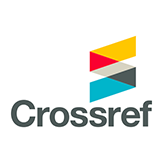Analysis of Policy Making Factors on The Prohibition of Hormones and Antibiotics Use for Feed as a Public Health Protection
Abstract
Keywords
Full Text:
PDFReferences
Balai Pengujian Mutu dan Sertifikasi Produk Hewan, 2014. Laporan Tahunan 2014,
Boeckela, Thomas P. Van, et.al, Global trends in antimicrobial use in food animals. PNAS, vol. 112, 2015, no. 18: 5649–5654. www.pnas.org/cgi/doi/10.1073/pnas.1503141112
Kementerian Pertanian, 2015. Bahan untuk Laporan Tahunan Ditjen PKH 2014 (Aspek Pakan Ternak). Diunduh dari http://pakan.ditjenpkh.pertanian.go.id/upload/data/Lap_Tahunan_PKH_2014_Aspek_Pakan.pdf
Kennedy, David M. 2007. An Economic Analysis of the Human Health Impacts oAntibiotic Use in Food Animal Production and the Demand for Antibiotic Free-Meat. Dissertation. University of California.
Masrianto, Fakhrurrazi & Azhari, 2013. Uji Resdiu Antibiotik Pada Daging Sapi Yang dipasarkan Di Pasar Tradisional Kota Banda Aceh. Medikal Veterinaria, Vol. 7, No, pp.13–14.
Palupi, Maria Fatima. 2015. Kajian Pustaka Raktopamin sebagai Stimulan Lipolisis dan Hipertrofi Otot pada Babi. Buletin Pengujian Mutu Obat Hewan 2015.Edisi 2.
Sd, H., 2016. Residu Antibiotika pada Pangan Asal Hewan dan Pengujiannya. IPB, pp.1–65. Available at: http://bpmsph.org/wp- content/uploads/2016/06/Residu-antibiotika-pada-pangan-asal- hewan-dan-pengujiannya_pak-Huda.pdf.
Siswanto, 2014. Kajian Resistensi Antimikrobial dan Situasinya pada Manusia di Indonesia. Seminar Nasional dan Diskusi Interaktif Resistensi Antimikroba, pp.1–35. Available at: civas.net/cms/assets/uploads/2014/03/Kajian-Resistensi- Antimikrobial-dan-Situasinya-pada-Manusia-di-Indonesia.pdf.
UU No. 41 tahun 2015 tentang perubahan atas UU No.18 tahun 2009
UU No.18 tahun 2009 tentang Peternakan dan Kesehatan Hewan
DOI: http://dx.doi.org/10.7454/ihpa.v2i2.1900
Refbacks
- There are currently no refbacks.















